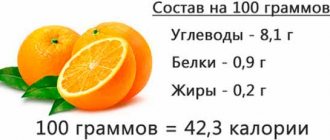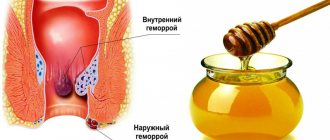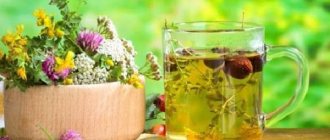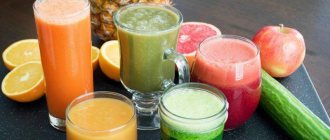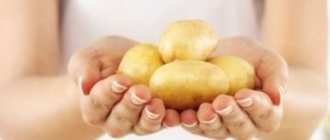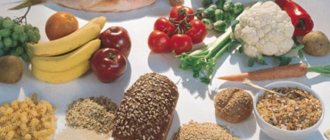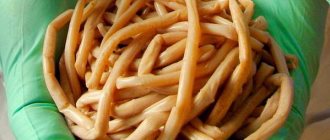Healing plants and herbs for pancreatitis and cholecystitis are officially recognized as excellent auxiliary agents as part of complex therapy. In acute pancreatitis, achieving positive effects from herbal preparations will not be easy.
However, in the case of a chronic disease, herbal mixtures can prevent tissue death, accelerate the regeneration of damaged mucous membranes of the gastrointestinal tract, restore the digestive process and stabilize the functioning of the pancreas.
What herbs can you drink for pancreatitis and cholecystitis?
Chamomile
Chamomile has pronounced antiseptic and anti-inflammatory properties, but doctors have not reached a consensus on whether it is permissible to use it as a remedy in the fight against pancreatitis and cholecystitis.
In case of chronic pancreatitis without complications, you can use chamomile decoctions and infusions to achieve an analgesic, wound-healing and carminative effect.
Persons suffering from a chronic disease with frequent relapses are not recommended to use the plant, as it can provoke a sharp release of bile.
In case of cholecystitis not complicated by cholelithiasis, careful use of chamomile is allowed. In case of exacerbation of the disease, the plant is used exclusively during the rehabilitation period, when the symptoms do not fully manifest themselves.
If you have gallstones, chamomile can cause colic and blockage of the bile ducts. When diagnosed with “chronic calculous cholecystitis,” the plant is usually prescribed as an auxiliary component in the herbal collection.
Plantain
Plantain is used in the treatment of chronic forms of pancreatitis, as well as cholecystitis, colitis, enteritis and various pathologies of the gastrointestinal tract. Plantain helps to improve the intestinal microflora, accelerates the regeneration of damaged tissues, relieves inflammation, spasms and reduces the level of discomfort in the gastrointestinal tract.
Symptoms of ailments: looking for the difference with a specialist
Before we look at the characteristic symptoms of pancreatitis and methods of treating this pathology, I would like to draw special attention to its inextricability with cholecystitis. As already mentioned, these two pathologies can be classified as paired, since the presence of cholecystitis is considered the root cause of the development of pancreatitis.
With the development of cholecystitis, inflammation occurs in the bile ducts, as a result of which stagnant processes occur in the bladder, and bile is not produced in the required quantity. This can lead to urolithiasis.
The gallbladder, like the pancreas, secretes enzymes necessary for the normal process of digesting food. If the functioning of the gallbladder is disrupted, the pancreas malfunctions, which is fraught with the development of two pathologies simultaneously - pancreatitis and cholecystitis. These two diseases have almost the same symptoms, and only the treating specialist can make a reliable diagnosis after conducting a series of studies and taking tests.
The main sign of the presence of such ailments is pain. It is localized on the right side of the abdomen in the subcostal region. With the development of pancreatitis, the pain has a wandering character and is often reflected in the dorsal part, and with cholecystitis - in the scapular region.
Symptoms of pancreatitis also include:
- belching after eating, even a small one;
- increase in low-grade fever;
- bowel dysfunction, most often diarrhea;
- nausea.
A number of factors can provoke the development of pathology of the pancreas and gallbladder, in particular:
- sedentary lifestyle;
- the presence of an excessive amount of fatty foods in the diet;
- unbalanced diet;
- genetic predisposition;
- alcohol abuse;
- disruption of the endocrine system;
- disturbance of hormone concentrations;
- intoxication of various types.
Herbal recipes for pancreatitis and cholecystitis
Decoctions
People suffering from cholecystitis and pancreatitis should consult their doctor before starting a course of auxiliary therapy, including decoctions of medicinal plants. If cholecystitis is not complicated by the presence of gallstone disease, the following universal decoction can provide support to the body:
- Take 2 parts each of barberry, chamomile and nettle leaves.
- Then 3 parts each of rose hips, St. John's wort and oregano.
- Then take 5 parts each of plantain, calendula, knotweed and yarrow.
Having prepared a decoction from the components listed above, you should consume it 3 times a day, 100 ml, shortly before each meal, for a course lasting from one and a half to two months.
Recommended video:
Persons diagnosed with “hypermotor form of cholecystitis” or “chronic pancreatitis” can be recommended a decoction based on the following herbal mixture:
- Take mint, celandine and nettle in equal proportions.
- Then add 2 parts each of cinquefoil, chamomile and knotweed roots.
Dandelion roots, plantain leaves, caraway seeds and St. John's wort are also added to the mixture. It is recommended to use this collection in the form of a decoction during the period of remission for a course lasting from 3 to 5 weeks.
Tinctures
Alcohol, even in small quantities, is contraindicated in both acute and chronic forms of pancreatitis. Ethanol disrupts the supply of pancreatic cells with nutrients and oxygen, which aggravates the patient's condition. Therefore, it is worth using tinctures of medicinal plants and herbs with great caution only during the period of remission and under the supervision of a physician.
In the case of chronic pancreatitis, barberry tincture can help, take 1 tsp. twice a day. Alcohol tincture of krifea is used for chronic pancreatitis in the amount of 17-18 drops 3 times a day.
This remedy eliminates secretory pancreatic insufficiency and stabilizes the digestive process. For preventive purposes, tinctures of calendula, echinacea and eleutherococcus roots can be used.
Ways of healing: using the gifts of nature
Recently, herbal medicine has become very popular. It is used in the treatment of many pathologies. Treatment of cholecystitis and pancreatitis with folk remedies is very similar, since these ailments usually appear together.
Today you can find many recipes for preparing traditional medicine that will help cope with ailments of the pancreas and gall bladder, but you should still not self-medicate. For treatment to be truly effective, comprehensive measures must be taken. Herbal remedies are good and effective in combination with pharmacological drugs of the required groups.
Before using any medications, consult your healthcare professional. Before starting treatment with folk remedies, the doctor, as a rule, recommends taking antispasmodic pharmacological drugs that will ease pain syndromes, as well as enzyme and choleretic drugs. Only after this is the patient recommended to use folk remedies, adhere to a dietary diet and undergo a course of sanatorium-resort treatment.
We present to your attention a selection of the most effective folk remedies used to treat pancreatitis.
Remedy No. 1
A simple and very effective way to treat this disease is diet. Moreover, it must be of the same type. The main and only dish for several days will be oatmeal, commonly called oatmeal.
Contraindications to the use of herbs
Decoctions and infusions of medicinal herbs and plants, as a rule, have fewer side effects than artificially synthesized pharmaceuticals. However, they also have certain contraindications.
Before starting a course that includes auxiliary products of plant origin, you should make sure that there are no allergies or individual intolerance to individual components of the herbal collection.
Herbal remedies are contraindicated during periods of exacerbation of cholecystitis or pancreatitis, with severe gastrointestinal lesions, during pregnancy, lactation and with unstable blood pressure.
Recommended video:
Share your opinion
Many of us, before starting treatment of pancreatitis with traditional medicine, try to find reviews from people who have already tried many methods on themselves and found the most effective herbal remedies.
In fact, there are as many different opinions as there are people. Generally speaking, in each specific case the herbal remedy should be selected individually and always with the permission of the treating specialist. Some people claim that onion juice combined with honey helps cope with pancreatitis. But according to a number of reviews, a decoction of golden mustache leaves helped many patients overcome this disease.
The uniqueness of oatmeal jelly in the treatment of the digestive tract
Since ancient times, oats have been used as a cleansing and soothing agent. Medicinal decoctions and infusions with amazing medicinal properties were prepared from it.
Before using oats for medicinal purposes, make sure that the product is of high quality. For medicinal purposes, it is better to buy raw oats.
To prepare the medicinal mixture, you should:
- First, raw oat grains should be thoroughly washed under running water, after which a kilogram of clean grains should be completely filled with cold water and placed for a day in a warm place, protected from sunlight.
- The oats should then be strained and allowed to dry thoroughly before grinding them into powder.
- Store powder only in a cool and dry place.
- To prepare the decoction, mix 200 ml of warm boiled water with 1 teaspoon of the resulting oat powder and place on low heat until it gradually boils for 30 minutes.
Use oats in the form of this decoction on an empty stomach in the treatment of chronic pancreatitis and cholecystitis. In case of acute inflammatory process in the pancreas, the decoction should also include 50 ml of brewed wheatgrass, boiled in a water bath.
Pancreatitis, like cholecystitis, can also be treated with oat infusion. To do this, pour half a kilogram of oats with a liter of boiling water and leave for 40 minutes. Then strain the resulting infusion through a gauze bandage and drink half a glass three times a day.
The healing power of mineral water
Often the development of inflammatory processes in the cavity of the gallbladder and pancreas is accompanied by a pathological deficiency of fluid in the body, therefore, with the development of these diseases, you should drink as much fluid as possible. Qualified specialists strongly recommend drinking alkaline water with mineral water for this.
In order for mineral water to have the necessary healing effect, it must be heated to a temperature of 36-38 degrees, but not more than 40.
It is very important that drinking mineral water for acute pancreatitis and cholecystitis has significant benefits and helps you survive the first two days of fasting, while avoiding completely different foods.
Warm mineral water helps to flush the bile ducts and pancreatic ducts and cleanse them of accumulated pathogens. As a result, pain and tension in the inflamed organs are sharply reduced.
Alkaline water also has a stimulating effect on the bile ducts in chronic pancreatitis and inflammation of the biliary tract. It is very important to drink only warm water, since low water temperature can cause spasms in the valve region of the muscle fibers. During acute attacks of these diseases, consume 1/3 glass every 30-40 minutes, over time the portion gradually increases.
Drinking mineral water is also an effective way to prevent exacerbation of chronic inflammatory processes in parenchymal organs.
Phytotherapy
Treatment with folk remedies for cholecystitis and pancreatitis is often carried out with herbs. To prepare medicinal decoctions, herbal kits are used, which include plants such as:
- parsley;
- wormwood;
- immortelle;
- dandelion root;
- milk thistle;
- greens with dill;
- celandine and much more.
Herbal treatment should be coordinated with a doctor, who will help develop the most effective regimen to achieve maximum therapeutic effect.
Let's consider an effective collection for the preparation of medicines for the treatment of inflammatory processes in the digestive tract:
- To prepare a medicinal infusion, you need to prepare 3 parts of dill and mint, 2 parts of hawthorn and dog tag, and one part of field chamomile. Dry the herbs, crush and mix. Boil 1 tablespoon in a glass of boiling water and leave for 30 minutes. Half a glass of tincture should be taken after meals three times a day.
- Take one part each of corn stalk, dill, dandelion root, St. John's wort, knotweed, violet herb and two parts celery herb, dried, crushed and mixed. To prepare a medicinal decoction, take one tablespoon of the prepared harvest and pour 200 ml of boiled water. Then put on fire and simmer for 5 minutes. The finished broth should be consumed warm in the amount of half a glass 30-40 minutes before the main meal three times a day.
- Prepare a collection of equal parts of mint, honeysuckle, St. John's wort, coriander, elecampane and fennel. Pour 1 tablespoon of the harvest with a glass of boiling water and leave for 55-60 minutes. Take half a glass 4 times a day.
Another unique medicinal herb for pancreatitis and gallstones is calendula. Calendula for pancreatitis has a strong anti-inflammatory and choleretic effect, therefore it is valuable in the treatment of cholecystitis. To prepare an infusion of this folk remedy, brew one tablespoon of the herb in a glass of boiling water and leave to infuse for 8 hours, covering the infusion container well. It is recommended to consume the prepared infusion in the amount of 1/3 cup half an hour before meals three times a day.
